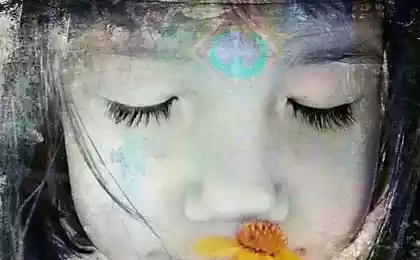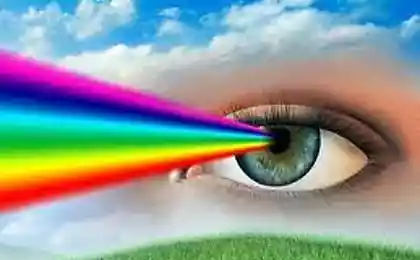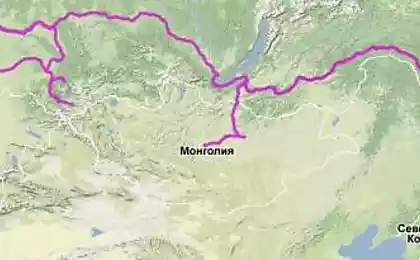425
As memory prevents us to distinguish colors
Our memory tends to go all shades of color to be reduced to a few colors, which for some reason has made for itself the basic.
Our eyes see many shades of colors: one blue only we can distinguish and azure, cobalt, ultramarine, and many other options.
However, we still delayed some "basic" colour that replaces the shades: azure, cobalt, ultramarine, and be just blue.

Jonathan Flombaum (Jonathan Flombaum) from Johns Hopkins University and his colleagues from several other U.S. academic centers have put the following experiment: volunteers were asked to look at a color wheel with 180 different shades and to find among them "the best" blue, "the best of" green, orange, etc.
Then for a moment (specifically, one-tenth of a second) showed a colored square, which were replaced by a completely white square, which at this time had to relive the color of the first square. Finally, the man had to find this color on the same color circle.
As they say the psychologists, in an attempt to indicate he had seen the colour of all the participants of the experiment were wrong, trying to show to the one they first showed up "the best", that is the most relevant yellow, blue, green, etc., and not one that was actually.
And craving for this base color was intensified when after the colored square you had even a fraction of a second to remember its color. That is, the more active working memory, the worse the man found the shade that he saw.
In other words, when we go to the store and take some Wallpaper or paint the same (we think) color, which we have at home and then come and realize that the shade is not the same, the blame here is not so much a salesman who convinced us to take it, and our own memory.
The same thing can be not only with flowers, and in General everything that we see: the brain tries to reduce all objects to some basic "prototypes" on which it was deposited.
Of course, when we talk about the best, or primary, or prototypical color, physics of color is irrelevant – we are talking about personal psychological characteristics of the individual.
Why a particular object or color suddenly become his main is another issue that requires separate study. It is possible that the answer here lies partly in language and discourse: if the word "blue" spoken and we meet more often than the word "azure", this could affect what kind of flowers will keep our memory.
P. S. And remember, only by changing their consumption — together we change the world! ©
Join us in Facebook , Vkontakte, Odnoklassniki
Source: vk.com/etorabotaet?w=wall-37160097_49241
Our eyes see many shades of colors: one blue only we can distinguish and azure, cobalt, ultramarine, and many other options.
However, we still delayed some "basic" colour that replaces the shades: azure, cobalt, ultramarine, and be just blue.

Jonathan Flombaum (Jonathan Flombaum) from Johns Hopkins University and his colleagues from several other U.S. academic centers have put the following experiment: volunteers were asked to look at a color wheel with 180 different shades and to find among them "the best" blue, "the best of" green, orange, etc.
Then for a moment (specifically, one-tenth of a second) showed a colored square, which were replaced by a completely white square, which at this time had to relive the color of the first square. Finally, the man had to find this color on the same color circle.
As they say the psychologists, in an attempt to indicate he had seen the colour of all the participants of the experiment were wrong, trying to show to the one they first showed up "the best", that is the most relevant yellow, blue, green, etc., and not one that was actually.
And craving for this base color was intensified when after the colored square you had even a fraction of a second to remember its color. That is, the more active working memory, the worse the man found the shade that he saw.
In other words, when we go to the store and take some Wallpaper or paint the same (we think) color, which we have at home and then come and realize that the shade is not the same, the blame here is not so much a salesman who convinced us to take it, and our own memory.
The same thing can be not only with flowers, and in General everything that we see: the brain tries to reduce all objects to some basic "prototypes" on which it was deposited.
Of course, when we talk about the best, or primary, or prototypical color, physics of color is irrelevant – we are talking about personal psychological characteristics of the individual.
Why a particular object or color suddenly become his main is another issue that requires separate study. It is possible that the answer here lies partly in language and discourse: if the word "blue" spoken and we meet more often than the word "azure", this could affect what kind of flowers will keep our memory.
P. S. And remember, only by changing their consumption — together we change the world! ©
Join us in Facebook , Vkontakte, Odnoklassniki
Source: vk.com/etorabotaet?w=wall-37160097_49241























